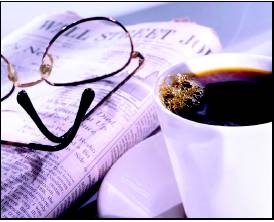Something natural about Coffee
 fee has been found growing on trees, reports New Scientist. It has raised hopes of a cheap alternative to artificially decaffeinated coffees
fee has been found growing on trees, reports New Scientist. It has raised hopes of a cheap alternative to artificially decaffeinated coffees available on store shelves. Brazilian researchers grew 3,000 Ethiopian coffee
available on store shelves. Brazilian researchers grew 3,000 Ethiopian coffee plants in an effort to find low-caffeine cof
plants in an effort to find low-caffeine cof fee nuts. They found a plant containing 15 times less caffeine than commonly-used varieties. The discovery was reported in Nature magazine.
fee nuts. They found a plant containing 15 times less caffeine than commonly-used varieties. The discovery was reported in Nature magazine. The caffeine-free coffee
 plants belong to a popular species, Coffea arabica, and yield superior quality beans.
plants belong to a popular species, Coffea arabica, and yield superior quality beans. This is said to be the first time that a decaf variety of Coffea arabica has been found. It is thought to lack the gene for an enzyme that is required to make caffeine.
Though caffeine is known and sometimes appreciated as a stimulant, it raises blood pressure, and disrupts sleep. There is a worldwide trend of healthconsciousness, so demand for decaf coffee
 is considerable. Over 10% of coffee
is considerable. Over 10% of coffee consumed worldwide is said to be decaf.
consumed worldwide is said to be decaf. But current processes for removing the caffeine from the coffee
 are expensive, and they may also damage the flavour. To keep the taste and remove the caffeine, carbon filters have to be used, but that’s even costlier. That’s why the caffeine-free plants may seem an attractive business proposition. People wondering about the taste of the coffee
are expensive, and they may also damage the flavour. To keep the taste and remove the caffeine, carbon filters have to be used, but that’s even costlier. That’s why the caffeine-free plants may seem an attractive business proposition. People wondering about the taste of the coffee manufactured from these plants will have to wait: the plants aren’t grown yet. They also grow around 30 per cent slower than ordinary plants. That’s why researchers want to cross-breed them with ordinary varieties to produce a fastergrowing, yet caffeine-free variety.
manufactured from these plants will have to wait: the plants aren’t grown yet. They also grow around 30 per cent slower than ordinary plants. That’s why researchers want to cross-breed them with ordinary varieties to produce a fastergrowing, yet caffeine-free variety. This cross breeding will set back commercial exploitation of the ‘decaf bushes’ by a decade or more, giving other contenders a chance. A genetically-modified coffee
 plant is just a few years away from maturing.
plant is just a few years away from maturing. Genetically modified plants may be completely caffeine-free, whereas the naturally bred Brazilian varieties have small amounts of caffeine. But people opposed to GM crops might prefer to wait for their cuppa.



